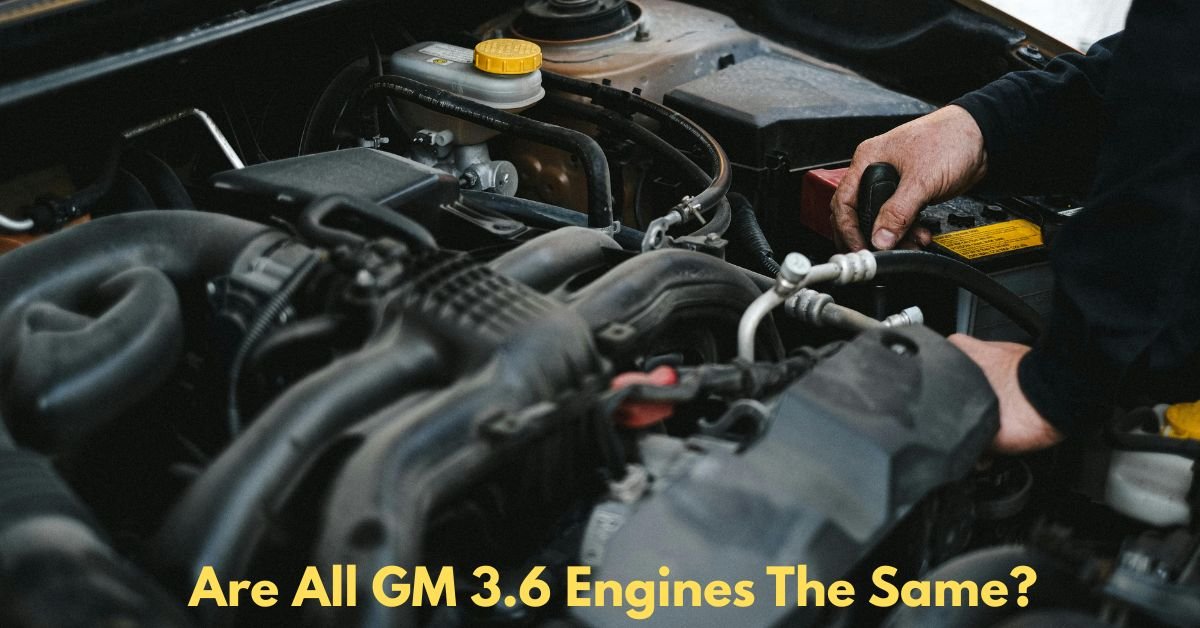The General Motors (GM) 3.6L V6 engine is one of the most widely used engines in GM’s recent history, powering a wide range of vehicles across Chevrolet, GMC, Cadillac, and Buick brands. But many car enthusiasts and DIY mechanics often ask: Are all GM 3.6 engines the same? The short answer is no, but the explanation goes much deeper.
Let’s break down the differences, similarities, and evolution of this popular powerplant.
Are All GM 3.6 Engines the Same?
A Brief Overview of the GM 3.6L Engine
The GM 3.6L V6 engine, often referred to as the “High Feature” V6, was first introduced in 2004 and has gone through several updates since then. The engine was developed as part of GM’s global V6 engine program, intended to replace older V6 designs with a more efficient, powerful, and modern unit.
This engine has seen use in everything from full-size SUVs and trucks to sedans and even performance cars like the Cadillac ATS and Camaro.
Different Versions of the 3.6L V6
There are multiple versions of the GM 3.6L engine, and they are not all the same. Here are the key variants:
- LY7 (2004-2010)
- The original version.
- No direct injection.
- Found in vehicles like the Cadillac CTS, Buick LaCrosse, and Saturn Outlook.
- Known for timing chain issues and less efficient fuel use compared to newer versions.
- LLT (2008–2015)
- First to include direct fuel injection.
- Improved horsepower and fuel economy over the LY7.
- Common in models like the Chevrolet Traverse, Camaro, and Cadillac STS.
- Timing chain wear is still a known issue in this version.
- LFX (2012–2017)
- An evolution of the LLT.
- Lighter due to a redesigned intake manifold and fewer emissions equipment.
- Better performance and reliability.
- Used in vehicles such as the Chevy Impala, Equinox, and Cadillac SRX.
- LGX (2016–Present)
- A completely new design for use with GM’s rear-wheel-drive Alpha platform.
- Uses dual overhead cams, variable valve timing, and advanced direct injection.
- Found in the Camaro, Cadillac ATS, CT6, and more.
- Offers up to 335 horsepower and significantly improved efficiency and emissions.
- LGZ (Truck Variant)
- Designed for SUVs and trucks, such as the GMC Canyon and Chevrolet Colorado.
- Tuned for torque rather than high RPM horsepower.
- Designed for durability under load and towing conditions.
Must Read: How To Reset Check Engine Light After Battery Change?

Key Differences to Consider
Here’s why it’s crucial to know which version of the GM 3.6L engine you’re dealing with:
- Interchangeability: Components between different versions (e.g., LLT vs LGX) are often not compatible. The cylinder head design, fuel system, intake/exhaust layout, and electronics differ.
- Performance: Each generation brought horsepower gains and better efficiency, often thanks to technologies like direct injection, lighter materials, and variable valve timing.
- Reliability: Early versions (LY7, LLT) had timing chain stretch problems and oil consumption issues. Newer ones (LFX, LGX) are far more reliable.
- Maintenance Requirements: Oil type, spark plug intervals, and timing chain care vary. Using incorrect parts or service procedures can cause engine damage.
Final Verdict: Not All the Same
While they share a common displacement and some design DNA, not all GM 3.6 engines are the same. From tuning and technology to mechanical differences, each version serves a unique purpose. Whether you’re considering a used vehicle, planning an engine swap, or just curious, it’s critical to identify the exact engine variant.
If you’re shopping for parts, trying to diagnose a problem, or looking into a project car, don’t just assume “3.6L V6” means universal compatibility. Always check the engine code (found in the VIN or stamped on the block) and year/model to get accurate info.
Final Tip
If you’re dealing with a GM 3.6 engine and unsure about its specific type, a good first step is to run the VIN through a GM decoder or use the RPO (Regular Production Option) code found in the glove box or on the build sheet. Knowing whether your engine is an LLT, LFX, or LGX will save you a lot of headaches—especially if you’re doing your own repairs or upgrades.
